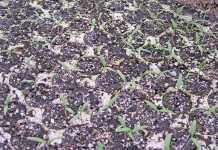As most readers might know by now, the lion (commonly referred to as #missinglion on social media platforms) caused havoc in the surrounds of the KNP, killing a fair share of livestock while successfully evading an army of trackers and even the police.
This placed the issue of predators on farms in the spotlight again, with conservationists pleading with Karoo farmers to not get involved in any efforts to capture or kill the animal. At the time of writing this blog, the lion has yet to be captured, but let’s take a look at the larger issue at hand.
We have reason to be concerned about the predation on our cattle. According to a 2010 study, small livestock predation was said to be costing the industry more than R1.3 billion annually – the cost of nearly 55 Nkandlas per year. The main culprits are said to be black-backed jackal and caracal, and various measures are taken to trap, kill or deter these animals from preying on livestock.
These range from lethal measures like gin-trapping to non-lethal measures like fencing. The lethal measures, of course, have environmentalists and eco-activists appealing to local farmers to resort to less harmful methods to protect their livestock.
We’re also seeing very good work from environmentalists, with NGOs like the Landmark Foundation monitoring the movement of endangered predators with its Leopard and Predator project. They also assist farmers with non-lethal methods to protect their livestock.
The debate about the protection of livestock entered the mainstream this year when a local supermarket chain launched a campaign to exclusively support sustainable farmers who do not resort to lethal measures to protect their livestock against predators.
Many farmers were up in arms about this, arguing that the predators are way more harmful to their farms and the economy than lethal attempts to protect their livestock – which brings me to my next thought: what exactly are the non-lethal, eco-friendly alternatives at our disposal, and how effective are they?
The Predation Management Forum (PMF) lists quite a few alternatives in this regard, from jackal-proof fencing and kraaling, to electronic devices, collars and even the more conventional guard animal.
With this blog aiming to be more technologically inclined, I find solar-powered devices like the Skaapwagter particularly interesting. The device is said to interfere with predators’ sense of smell, and also releases high sound frequencies that further irritate their hearing and sight.
A simpler, cheaper alternative is the King Collar – a non-toxic, plastic protective device that prevents the loss of small agricultural stock such as sheep to predators. There are also solar-powered devices with flashing lights and collars that omit deterring odours.
I’m not sure how effective any of these devices will be in deterring the #missinglion, though! But if these devices really are effective enough for organisations like the PMF to be promoting them, they might just be worth a try.
I would love to hear more of your thoughts and success stories – feel free to share them in the comments section below.











